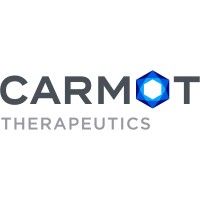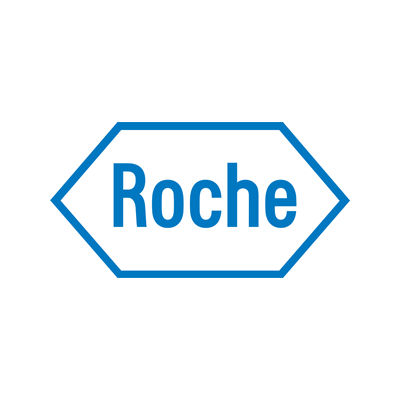Request Demo
Last update 13 Dec 2025
CT-996
Last update 13 Dec 2025
Overview
Basic Info
Drug Type Small molecule drug |
Synonyms CT 996, CT996, RG-6652 + [1] |
Target |
Action agonists |
Mechanism GLP-1R agonists(Glucagon-like peptide 1 receptor agonists) |
Therapeutic Areas |
Active Indication |
Inactive Indication- |
Originator Organization |
Active Organization |
Inactive Organization- |
License Organization |
Drug Highest PhasePhase 2 |
First Approval Date- |
Regulation- |
Login to view timeline
Related
6
Clinical Trials associated with CT-996CTIS2025-522766-78-00
A study investigating the safety, absorption, and elimination of RO7795081, a new compound that may potentially be used in the treatment of type 2 diabetes and weight control
Start Date10 Nov 2025 |
Sponsor / Collaborator |
NCT07112872
A Randomized, Double-Blind, Placebo- and Open-Label Active Comparator- Controlled, Parallel-Group, Multi-Center Phase II Study to Evaluate the Efficacy, Safety, and Tolerability of Once-Daily RO7795081 Administered for 30 Weeks to Participants With Type 2 Diabetes Mellitus
This multicenter, randomized, double-blind, placebo- and open-label active comparator-controlled, parallel-group, dose-range-finding, Phase II study aims to evaluate the efficacy, tolerability, and safety of RO7795081 for glycemic control in adult participants with Type 2 diabetes mellitus (T2D).
Start Date19 Aug 2025 |
Sponsor / Collaborator |
NCT07081958
A Randomized, Double-Blind, Placebo-Controlled, Parallel-Group, Multi-Center, Phase II Study to Evaluate the Efficacy, Safety, and Tolerability of Once-Daily RO7795081 Administered for 38 Weeks to Participants With Obesity or Overweight With at Least One Weight-Related Comorbidity
This multicenter, randomized, double-blind, placebo-controlled, parallel-group, dose-range-finding, Phase II study aims to evaluate the efficacy, tolerability, and safety of RO7795081 for chronic weight management in adult participants with obesity or overweight with at least one weight-related comorbidity, but without diabetes mellitus.
Start Date29 Jul 2025 |
Sponsor / Collaborator |
100 Clinical Results associated with CT-996
Login to view more data
100 Translational Medicine associated with CT-996
Login to view more data
100 Patents (Medical) associated with CT-996
Login to view more data
58
News (Medical) associated with CT-99607 Aug 2025
Eli Lilly’s injectable obesity drug Zepbound has been
proven more effective
than Novo Nordisk’s Wegovy. But in the battle of the pills, it appears to be the other way around.
Lilly on Thursday disclosed that its oral product orforglipron had
disappointed
in the first of two pivotal trials, with weight loss of around 11% after 72 weeks. This trails Novo’s oral version of Wegovy, which scored weight loss of 13% in a roughly comparable trial.
But the pills, both of which are GLP-1 agonists, are not the only ones in development. Roche, Viking Therapeutics and Structure Therapeutics are some of the companies also working on oral obesity candidates, and some results, though early, look very promising.
Lilly and Novo will have the battleground to themselves for some time. No other pills have started Phase 3 trials in obesity, and only a handful have mid-stage data.
Structure’s aleniglipron is one, having achieved a decrease in weight of 6.2% at three months in a Phase 2a trial. Aleniglipron, formerly called GSBR-1290, is now in two Phase 2b obesity studies called ACCESS and ACCESS II, assessing lower and higher doses, respectively.
Patients in both studies will receive the GLP-1 for around eight months, and topline weight loss data ought to come this year, CEO Ray Stevens
recently
told
Endpoints News.
He said he hoped that the ACCESS trials might yield weight loss of about 15%.
Another company with three-month Phase 2a data is Shanghai-based Regor Therapeutics. According to a presentation at the American Diabetes Association’s meeting in June, RGT-075, as its product is known, produced weight loss of 5.4%, versus 0.5% with placebo.
RGT-075 is currently being evaluated in a global Phase 2b study called COMO-1, in which the pill will be given to patients with obesity or overweight with weight-related comorbidities for around eight months. Topline data are expected at the end of 2025.
Novo has another iron in the fire, though it’s not an incretin. Monlunabant is an inverse agonist of the CB1 receptor that was acquired via Novo’s
purchase
of Inversago Pharma for up to about $1 billion in 2023. In Phase 2, patients taking a 10 mg daily dose of monlunabant for four months
managed
weight loss of 7.1 kg, compared with 0.7 kg for those taking the placebo. At the higher doses of 20 mg and 50 mg, Novo said there was “limited additional weight loss.”
Since the average baseline weight of patients in the trial was 110.1 kg, which translates to about 243 pounds, those given 10 mg of Novo’s drug lost around 6.4% of their weight. Monlunabant remains in Novo’s pipeline, but it is unclear whether any studies are ongoing.
Another large pharma with an obesity pill is Roche. CT-996 was one of a suite of obesity assets that came to the Swiss giant from the $2.7 billion acquisition of Carmot Therapeutics in 2023. It
helped
Phase 1 subjects lose up to 7.3% of their weight within one month. At the time this was reported last September, this was the best weight loss seen with a pill at such an early timepoint.
That record did not last long. The oral form of Viking Therapeutics’ VK2735
posted
a weight loss figure of 8.2% at one month in its Phase 1 trial, which read out in November. Data from a Phase 2 trial are imminent and carry high expectations.
Also closely-watched is yet another Novo asset, the GLP-1 and amylin agonist amycretin. This, too, exists in both shot and pill forms. The oral version
yielded
weight loss of 13.1% after four months in a Phase 1 trial, although this necessitated taking two pills a day. Oral amycretin remains at the Phase 1 stage in obesity, according to Novo’s pipeline.
While these early-stage assets are promising, several of these companies will be unable to bring them to market without a larger partner. And oral drugs must be dosed higher than shots, making pills more expensive to manufacture. Even so, obesity pills are expected to be immensely lucrative, and this space will evolve at a furious pace in the months and years to come.
Clinical ResultPhase 2Phase 1AcquisitionPhase 3
28 May 2025
iStock,
Prostock-Studio
R&D spending across the global pharmaceutical sector climbed 1.5% in 2024, according to unreleased data from Evaluate Pharma.
Even with
strong macro headwinds
—inflation, rising costs,
geopolitical tensions
—the global pharmaceuticals industry continued to pump more money into R&D investments in 2024.
That’s according to data from analyst firm Evaluate Pharma, which in an email gave
BioSpace
a sneak peek at their World Preview 2025 report, set to be published in June 2025. Pharma R&D spending in 2024 grew by 1.5%, a relatively modest jump by the industry’s own standards, considering that from 2022 to 2023, budgets soared 11.5%. Still, R&D spending last year was staggering: drugmakers the world over pumped nearly $288 billion into research and development.
“R&D is central to refreshing product portfolios, which have a natural lifecycle owing to patents and exclusivity periods,” Daniel Chancellor, VP of thought leadership at Norstella, Evaluate’s parent company, told
BioSpace
. “Without reinvestment into R&D (or business development), revenues are increasingly at risk of competition and will inevitably decline.”
This is why Evaluate estimates that the industry will continue to grow their R&D budgets through the end of the decade—which, as per its yet-to-be-released data, could reach just under $340 billion by 2030—even as the political and economic environment grows increasingly unwelcoming.
“R&D spending will continue to grow, thankfully because industry revenue growth is robust,” Chancellor assured
BioSpace
. He qualified this assertion, however, by noting that Evaluate “expects R&D margins to decline” as companies continue to enact “cost containment measures” to surmount the increasing number of external challenges to their businesses. These challenges include tariffs, drug pricing and the cost of capital.
In the context of these high-level barriers, Guglielmo Bruni Roccia, senior pharmaceutical industry analyst at BMI, a Fitch Solutions company, offered a more pessimistic view of R&D spending patterns in the coming years. President Donald Trump’s
Most Favored Nation drug pricing policy
, for example, “could result in compression of U.S. revenues, which would in turn reduce available R&D funding,” Roccia told
BioSpace
.
“With constrained revenue streams, we expect pharmaceutical companies will likely prioritize R&D projects with greater certainty of profitability and where they have a greater competitive advantage,” he added.
Still, there is reason to be optimistic. Experts who spoke with
BioSpace
pointed to the industry’s spending spree, particularly in
manufacturing
, as a promising signal.
“Infrastructure investments enhance R&D capabilities, indicating a complementary rather than competitive relationship,” Roccia explained, noting that a manufacturing push “will support and potentially boost R&D activities rather than hinder them.”
Norstella’s Chancellor agreed, adding that “these new facilities will rely on the success of R&D to produce the drugs of tomorrow, as well as meeting demand for current portfolios.”
Dealmaking appears to be continuing at pace, as well. Despite an
increasingly tricky political thicket
, the first quarter witnessed a rush of M&A and licensing deals, with the industry earmarking some $40 billion for business development initiatives.
This bodes well for the industry, since deals
contributed heavily
to the encouraging R&D trend in 2024. All top spenders in this list are anchored by a major contract at least hundreds of millions of dollars in value, bolstered by additional spending to beef up their pipelines.
Below,
BioSpace
looks at the pharma industry’s most prolific investors in R&D and how they are using these budgets to advance their business.
Merck Reigns Even After Scaling Back
R&D Spend: $17.9 billion
YoY Change: -41%
In 2023, Merck went on an expensive deal-making spree. The pharma acquired immune specialist Prometheus Biosciences for
$10.8 billion
, licensed three of Daiichi Sankyo’s antibody-drug conjugates for
$4 billion upfront
and inked a
potential $2.55 billion
molecular glue deal with Proxygen, among other transactions.
With a particularly bloated R&D purse in 2023, the 41% decrease in spending last year is more of a rightsizing of Merck’s budget than a steep scale-back. Indeed, the company still came out ahead of its Big Pharma peers with a hefty $17.94 billion investment, corresponding to 28% of its total revenue.
“With the looming loss of exclusivity of Merck’s Keytruda, Merck has ramped up R&D efforts to address the nearly $30 billion revenue gap left by the drug,” Ophelia Chan, senior business fundamentals analyst at GlobalData, told
BioSpace.
“It’s worth keeping a close eye on [Merck’s] pipeline, which includes around 20 potential new blockbuster candidates that could collectively generate over $50 billion in the future,” Chan added.
Among them is ifinatamab deruxtecan, an antibody-drug conjugate (ADC) that targets B7-H3, a transmembrane protein over expressed in various cancers. Merck is running the
Phase III IDeate-Esophageal01
study
to test the ADC in advanced or metastatic esophageal squamous cell carcinoma. Ifinatamab deruxtecan is also being proposed for heavily pretreated advanced small cell lung cancer, for which it is in
late-stage development
.
Merck is also testing tulisokibart (MK-7240), which was picked up in the $10.8 billion acquisition of Prometheus Biosciences, in multiple
inflammatory diseases
. Phase II data, published in the
New England Journal of Medicine
in September 2024, showed that a higher percentage of ulcerative colitis patients treated with the anti-TL1A antibody achieved clinical remission versus placebo. Tulisokibart
is in Phase III development
for ulcerative colitis and Crohn’s disease.
Merck CEO Robert Davis told investors in February that he expects blockbuster opportunities from the pharma’s ophthalmology business, which received a
$1.3 billion boost
last year with the May acquisition of the eye specialist EyeBio. The centerpiece of the acquisition is the trispecific antibody Restoret being assessed for diabetic macular edema (DME) and neovascular age-related macular degeneration (AMD). In September 2024, Merck
kicked off
the Phase IIb/III trial for Restoret in DME. The study, dubbed
BRUNELLO
, is set to complete by the end of 2027.
Johnson & Johnson Strong in Cancer and Immuno—but not Neuro
R&D Spend: $17.2 billion
YoY Change: 14.2%
J&J started 2024 by renewing its focus on its three main priority therapeutic areas—“oncology, immunology and neuroscience,” CEO Joaquin Duato told investors during the pharma’s full-year 2023 earning call—and the pharma’s R&D spending last year largely reflected this.
For instance, J&J
paid $2 billion
to acquire Ambrx in January 2024. The bet builds out the pharma’s portfolio of ADCs, which in recent years have become a major focus in cancer therapy.
In addition, J&J last year made two hefty investments into its immuno business: the
$850 million acquisition
of Proteologix and its pipeline of anti-inflammatory dermatology assets, and a
$1.25 billion payment
to Numab Therapeutics for its bispecific antibody for atopic dermatitis.
All told, J&J spent more than $17.2 billion on R&D last year, accounting for over 19% of its total revenue. This sum also covers its medtech investments.
Even as these deals helped J&J populate its early- and mid-stage pipelines, the pharma last year likewise pushed its late-stage assets forward. In immuno, for instance, the company in August 2024
sought approval
for its monoclonal antibody nipocalimab in myasthenia gravis, which was
ultimately granted
in April to be marketed as Imaavy.
Notably, neuroscience was a weak point for J&J’s 2024 R&D agenda. In October 2024, the pharma
pruned
its early- and mid-stage neuro pipeline, leaving the investigational human orexin-2 receptor blocker seltorexant on the cutting room floor. J&J had been studying seltorexant for agitation and aggression in Alzheimer’s disease. The company also axed a Phase II ion channel blocker for bipolar depression and a Phase I Parkinson’s disease therapy.
J&J seems set on changing that this year, however, starting 2025 strong with the
massive $14.6 billion acquisition
of Intra-Cellular Therapies.
Roche’s Mixed Year for Cancer
R&D Spend: CHF 13 billion ($15.8 billion)
YoY Change: 1%
During its full-year 2024 business report in February 2024, Roche leaders recognized that sales were stagnating, driven largely by tanking demand for its COVID-19 products and currency difficulties at the time. The company
identified dealmaking
as one of its care strategies to revitalize growth.
Still, unlike Merck and J&J, which enacted substantial changes to their budgets, Roche’s R&D spending in 2024 remained largely flat year-on-year. The Swiss company poured just over CHF 13 billion ($15.8 billion) in its R&D and business development efforts last year, a slight 1% increase from 2023.
2024 also posed formidable challenges to Roche’s R&D efforts in cancer. In July 2024, for instance, the company’s anti-TIGIT antibody tiragolumab
failed to significantly improve
progression-free survival in the Phase II/III SKYSCRAPER-06 study in NSCLC, forcing Roche to discontinue that trial. A few months later, in November, tiragolumab again
delivered disappointing NSCLC outcomes
.
Perhaps reflecting these difficulties in oncology development, Roche in April 2024
axed
three early-stage cancer assets, including camonsertinib, which it was testing for solid tumors. In August, Roche
closed down
the cancer immunology unit of its subsidiary Genentech, with a spokesperson at the time pointing to “shifts in the science of immuno-oncology” as the reason for the shake-up.
Despite some obstructions in oncology, Roche in 2024 saw notable progress in its obesity portfolio, anchored by the assets it obtained from its
$2.7 billion acquisition
of Carmot Therapeutics in December 2023. Last May, the pharma announced that Carmot’s CT-388, a dual GLP-1/GIP receptor agonist,
could lower bodyweight by 18.8%
versus placebo at 24 weeks.
Roche followed this up with a July 2024 readout for another Carmot asset, the oral GLP-1 receptor agonist CT-996. Phase I data at the time showed that the pill
can cut weight by 6.1%
versus placebo after four weeks.
Roche’s standout deal last year was the November 2024 acquisition of Poseida Therapeutics for
$1 billion
upfront. Roche and Poseida are
long-time partners
, and the acquisition strengthens their CAR T collaboration, targeting multiple myeloma and B cell lymphomas, among other blood cancers.
With more than half of the year left to go, it remains unclear how Roche’s R&D budget will change in 2025—though it’s unlikely that the pharma will go on a big spending spree soon. During its full-year business report in February, CEO Thomas Schinecker said that Roche will remain “
disciplined
” with dealmaking this year, focusing only on assets that make strong financial sense for the company.
AstraZeneca Upped Investment to Buff Pipeline
R&D Spend: $13.6 billion
YoY Change: 25%
AstraZeneca opened 2024 with a commitment to “investing in new technologies and new products to shape the future of medicine,” CEO Pascal Soriot said in February 2024 during the pharma’s full-year 2023 earnings call.
A month later, in March, AstraZeneca made good on this commitment by inking two high-ticket acquisitions to build out its late-stage pipeline. The first of these deals is with Amolyt Pharma, which the pharma
acquired for $800 million upfront
. A few days later, AstraZeneca
dropped $2 billion
to acquire Fusion Pharmaceuticals.
From Amolyt, AstraZeneca received the hypoparathyroidism candidate eneboparatide, which
recently aced a Phase III trial
, along with other assets being developed for rare diseases. Meanwhile, Fusion gave AstraZeneca its radiopharma pipeline, anchored by FPI-2265, an actinium-225 radioconjugate therapy being proposed for the treatment of metastatic castration-resistant prostate cancer.
AstraZeneca last year also poured money into the opposite end of its pipeline, expanding its early-stage portfolio with a
$19 million deal with Nona Biosciences
in May 2024 for several preclinical monoclonal antibodies for cancer. That same month, AstraZeneca started putting bets in the lucrative obesity arena by
paying $80 million
to support Versant Ventures startup SixPeaks, which will work on next-generation, muscle-preserving weight-loss drugs.
One of AstraZeneca’s most closely watched assets is its Daiichi Sankyo-partnered antibody-drug conjugate Dato-DXd. Despite
winning FDA approval earlier this year
for breast cancer under the brand name Datroway, the molecule ran into a rough patch last year, failing two Phase III trials in September—one in
breast cancer
and another in
non-small cell lung cancer
.
Elsewhere in AstraZeneca’s cancer pipeline, the AKT blocker Truqap in November 2024
delivered a late-stage victory
, significantly improving radiographic progression-free survival in certain types of prostate cancer. In April, however, Truqap
stumbled
in a Phase III prostate cancer, pushing the pharma to axe the Phase III CAPItell-280 study.
AstraZeneca appears to be sustaining the pace of its R&D spending into the new year. In March alone, for instance, the pharma
put $1 billion on the line
to acquire EsoBiotec and its cell therapy pipeline, and signed two agreements with South Korea’s Alteogen to collaborate on subcutaneous cancer therapies. All told, AstraZeneca’s payments to Alteogen
could total $1.35 billion
.
AbbVie Makes Strong Neuro Push
R&D Spend: $12.8 billion
YoY Change: 60%
Of all the companies on this list, AbbVie saw the biggest increase in its R&D spending, soaring 60% year-on-year to hit nearly $12.8 billion.
Likely the biggest contributing factor is the pharma’s
$8.7 billion acquisition
of Cerevel Therapeutics in December 2023. The star of this buyout was the next-generation antipsychotic agent emraclidine, which ultimately
failed
a pair of Phase II trials, forcing investors to question AbbVie’s neuro strategy. The Cerevel acquisition wasn’t a complete wash for AbbVie, however. In September 2024, just a month after closing the transaction, the pharma
notched a late-stage clinical win
in Parkinson’s disease with tavapadon.
Beyond Cerevel, AbbVie sustained its neuro push in 2024, linking up with Gilgamesh Pharmaceuticals in May 2024
for $65 million upfront
and up to $1.95 billion in option and milestone fees. The partnership is focused on developing psychedelic therapies for psychiatric indications.
Outside of neuro, AbbVie in 2024 leaned further into its main area of expertise—immunology —putting up
$250 million
to acquire
Massachusetts biotech Celsius Therapeutics and its investigational antibody for inflammatory bowel diseases.
Oncology also saw a lot of progress for AbbVie last year, including a
slew of positive readouts
in ovarian cancer, non-small cell lung cancer and other solid tumors at ESMO 2024. A few months later, in December, the pharma likewise
released data
supporting the use of its bispecific T cell–engaging antibody epcoritamab as a monotherapy or as part of a combination regimen in patients with diffuse large B cell lymphoma.
Despite being among pharma’s top R&D spenders, AbbVie doesn’t seem to be resting on its laurels. Already, the company has made several deals this year that could top $1 billion. In January, AbbVie
teamed up
with Neomorph to develop molecular glue degraders, putting up to $1.64 billion on the line for this partnership.
Clinical ResultPhase 3AcquisitionPhase 2Phase 1
15 Mar 2025
Welcome back to Endpoints Weekly. Our reporters tracked a flurry of deals and data readouts this week, plus updates on the Trump administration’s health agency picks. Let’s dive in.
The Trump administration pulled its nomination for CDC candidate Dave Weldon hours before he was set to appear before the Senate HELP committee on Thursday. The move came as a surprise following what’s been a relatively easy path for other healthcare appointments. Endpoints’ Max Bayer has the details below.
Keep reading for a summary of this week’s deals, including Roche and Zealand Pharma’s massive obesity partnership and Bristol Myers Squibb’s acquisition of 2seventy bio. And Elizabeth Cairns has the latest on Pfizer and Arvinas’ breast cancer candidate that extended progression-free survival in certain patients in a Phase 3 trial, but not in the overall population. The companies still plan to file for approval, she reported.
Thanks for reading, and have a great weekend! —
Nicole DeFeudis
🏛️The Trump administration
pulled its nomination
for Dave Weldon to lead the CDC on Thursday,
hours before his Senate confirmation hearing was scheduled to begin. Weldon, a former Florida congressman, has been sympathetic to concerns about vaccines in the past and was seen as an ally of HHS Secretary Robert F. Kennedy, Jr.’s push to reopen long-settled questions about vaccine safety. The debunked link between vaccines and autism came up several times during the confirmation hearings for Kennedy, as well as for Trump’s NIH and FDA nominees.
Two other healthcare nominees are advancing to the full Senate:
FDA nominee Marty Makary and NIH nominee Jay Bhattacharya. The Senate HELP committee voted 14-9 in favor of Makary, and 12-11 for Bhattacharya.
Mehmet Oz, Trump’s pick to lead CMS, sailed through a Senate confirmation hearing on Friday.
The former surgeon and TV personality
was questioned
about the high cost of healthcare, potential cuts to Medicaid and more. Most of his responses seemed to satisfy legislators. When asked whether he would continue to defend Medicare drug price negotiations under the IRA, Oz responded: “It’s the law. I’m going to defend it and use it.”
Meanwhile, the Trump administration must reinstate probationary government employees that it fired without proper notice, according to a court order.
A Maryland federal judge
granted a temporary restraining order
against the government in a legal challenge brought by 20 states over mass layoffs. The order applies to over a dozen federal agencies, including HHS, that were named defendants in the suit. It restores the status quo for 14 days while the court considers a longer injunction.
📉 Pfizer and Arvinas are partnered on protein degrader technology
that is aiming to change the treatment paradigm of certain cancers. But the pair
ran into a stumbling block
this week when they reported that their vepdegestrant program did not extend progression-free survival rates in the overall population of a Phase 3 breast cancer study. Arvinas’ stock price fell more than 50% on the news.
The trial was considered the first big test
of a class of drugs called proteolysis-targeting chimeras, or PROTACs, and Pfizer had high hopes for the program after paying $1 billion upfront to partner with Arvinas in 2021. Researchers were testing vepdegestrant as a monotherapy in estrogen receptor-positive, HER2-negative metastatic breast cancer. Patients were in the second-line setting, having previously received CDK4/6 inhibitors and hormone therapy.
Vepdegestrant isn’t completely dead, as Pfizer and Arvinas
will still seek approval. Despite its apparent lack of effect in the overall trial population, the drug cut the risk of progression or death by at least 40% (the companies did not provide the exact figure) compared to the hormone therapy Faslodex in patients with mutated estrogen receptor genes. But it may not get as broad a label as investors and executives may have wanted.
🧬 Beam Therapeutics, meanwhile, saw some good news
when it
reported this week
that an experimental base editing treatment helped lower levels of mutant proteins — and increase levels of corrected proteins — in nine people with a rare lung disease. The one-time therapy reduced levels of mutant proteins by 11% and 38% in the first two dose levels. And, in one patient at the highest dose, the treatment reduced levels of mutant protein by 78%. Beam is still deliberating whether it will test higher doses.
The company claims it’s the first clinical results
using base editing to directly correct a disease-causing mutation. It’s also Beam’s first trial results using
in vivo
base editing, which is considered to be a sort of CRISPR 2.0 with its ability to insert single-letter changes to the DNA. There were no side effects, and the protein was detected within three days of treatment.
🤝Roche and Zealand Pharma will collaborate on the biggest
obesity partnership to date, with Roche
ponying up $1.65 billion upfront
for an amylin analog called petrelintide. Including milestone payments, the deal could be worth up to $5.3 billion. They plan to test petrelintide in combination with some of Roche’s other pipeline programs, including the GLP-1/GIP agonist CT-868, and a pill called CT-996. Zealand CEO Adam Steensberg told Endpoints News that obesity will be the first indication, “with an ambition of rapidly expanding.”
Bristol Myers also got in on the action,
acquiring its
troubled cell therapy partner
2seventy bio, which spun out from bluebird bio, for $286 million in cash. The companies are partnered on the CAR-T therapy Abecma. 2seventy has fallen on hard times of late, having sold off most of its R&D work to Regeneron and laying off staff. BMS is buying 2seventy for $5 per share after the company peaked at $38 — but 2seventy fared better than bluebird, after SEC documents
revealed its buyout offer shrunk
from $100 million to $29 million.
And in a smaller deal this week,
Daiichi Sankyo and Johnson & Johnson both teamed up with Nosis Bio, a startup
developing new ways
to deliver RNA therapies to specific cells. Nosis was founded in 2021 and has only raised $13 million so far, but the two pharma deals could bring in more than $1.5 billion if all the milestones are met. Much remains unknown: Nosis did not disclose how much money it received upfront from Daiichi and J&J, nor did it say what kinds of cells or diseases the partnerships entail.
A biotech advancing a once-monthly liver disease drug is exploring both an IPO and an acquisition.
Boston Pharma
is getting ready to launch a Phase 3 study in patients with metabolic dysfunction-associated steatohepatitis, a form of advanced fatty liver disease also known as NASH. For years, the condition was mainly treated with diet and exercise, until Madrigal Pharmaceuticals won the first approval last year. A handful of competitors are in late-stage trials, but Boston Pharma’s CEO Sophie Kornowski isn’t daunted. “I’m extremely motivated to do it well, and to do it fast,” she said.
The agency said this week that it won’t allow
employees who review new drug or medical device applications
to take a $25,000 buyout
offered to all HHS staffers. These include individuals in the CDER, CBER, CDRH, CVM, CTP and OC offices. The carveouts for staff funded by industry user fee dollars show the extent to which the FDA and HHS are not targeting drug and device reviewers in the Trump administration’s wider government staffing cuts.
Clinical ResultPhase 3Acquisition
100 Deals associated with CT-996
Login to view more data
R&D Status
10 top R&D records. to view more data
Login
| Indication | Highest Phase | Country/Location | Organization | Date |
|---|---|---|---|---|
| Diabetes Mellitus, Type 2 | NDA/BLA | United States | - | |
| Obesity | Phase 2 | United States | 29 Jul 2025 |
Login to view more data
Clinical Result
Clinical Result
Indication
Phase
Evaluation
View All Results
| Study | Phase | Population | Analyzed Enrollment | Group | Results | Evaluation | Publication Date |
|---|
Phase 1 | - | iiozkuiqeq(cqbrdktane) = cidzzccsdo vwfxsefeoe (pcmzneexfq ) | Positive | 17 Jul 2024 | |||
Placebo | iiozkuiqeq(cqbrdktane) = htxadxwmry vwfxsefeoe (pcmzneexfq ) | ||||||
Phase 1 | - | CT-388 | hihtqvciab(unlilgrdtx) = the majority of the adverse events being gastrointestinal-related and mostly mild in severity sfjczacnal (irsmjtwoxi ) | Positive | 10 Oct 2023 |
Login to view more data
Translational Medicine
Boost your research with our translational medicine data.
login
or
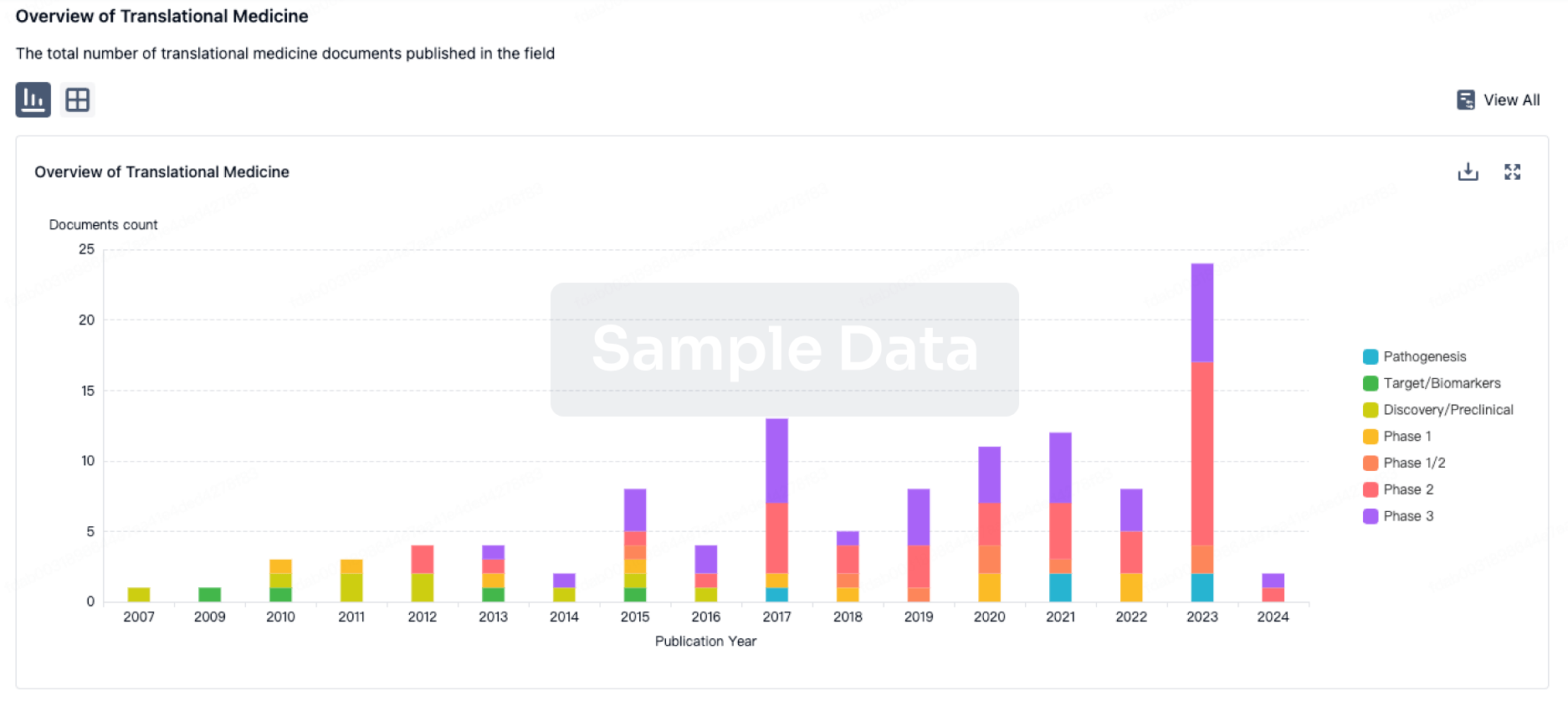
Deal
Boost your decision using our deal data.
login
or

Core Patent
Boost your research with our Core Patent data.
login
or

Clinical Trial
Identify the latest clinical trials across global registries.
login
or
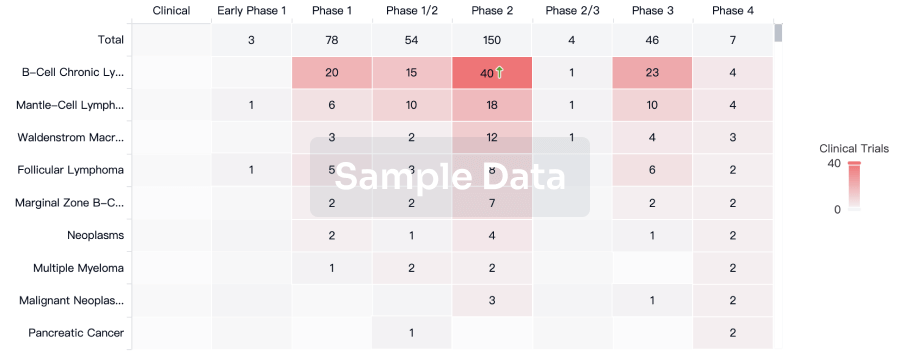
Approval
Accelerate your research with the latest regulatory approval information.
login
or
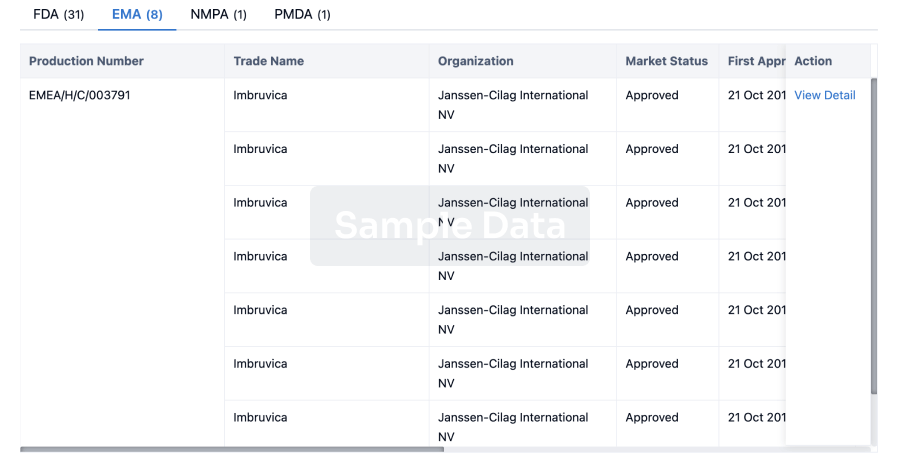
Regulation
Understand key drug designations in just a few clicks with Synapse.
login
or

AI Agents Built for Biopharma Breakthroughs
Accelerate discovery. Empower decisions. Transform outcomes.
Get started for free today!
Accelerate Strategic R&D decision making with Synapse, PatSnap’s AI-powered Connected Innovation Intelligence Platform Built for Life Sciences Professionals.
Start your data trial now!
Synapse data is also accessible to external entities via APIs or data packages. Empower better decisions with the latest in pharmaceutical intelligence.
Bio
Bio Sequences Search & Analysis
Sign up for free
Chemical
Chemical Structures Search & Analysis
Sign up for free
